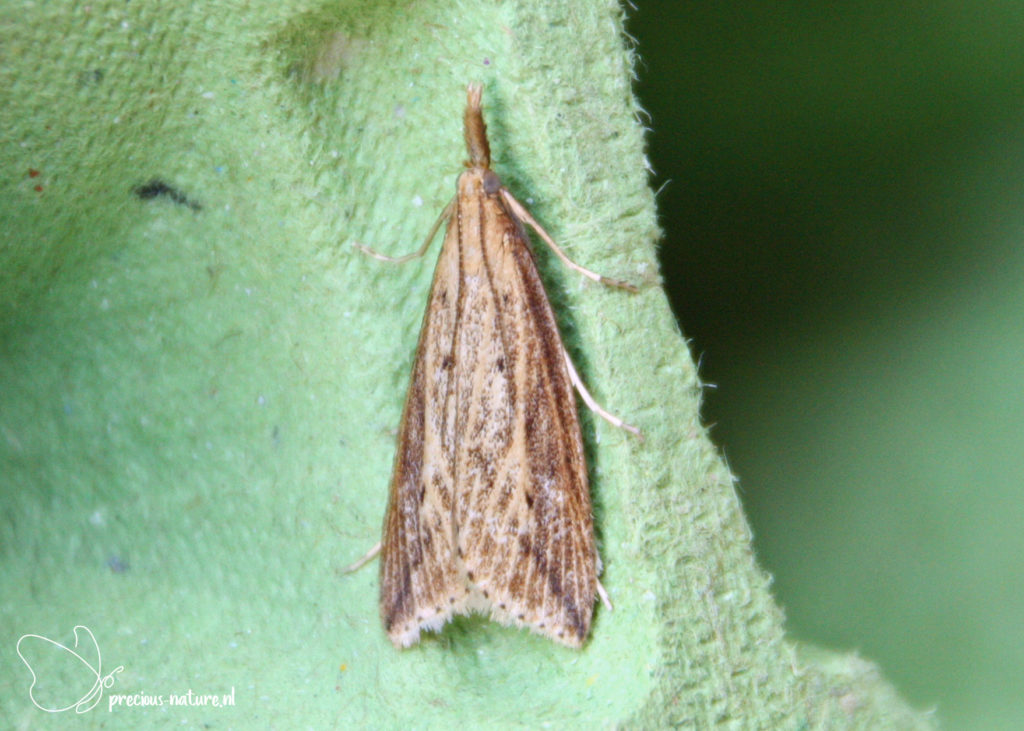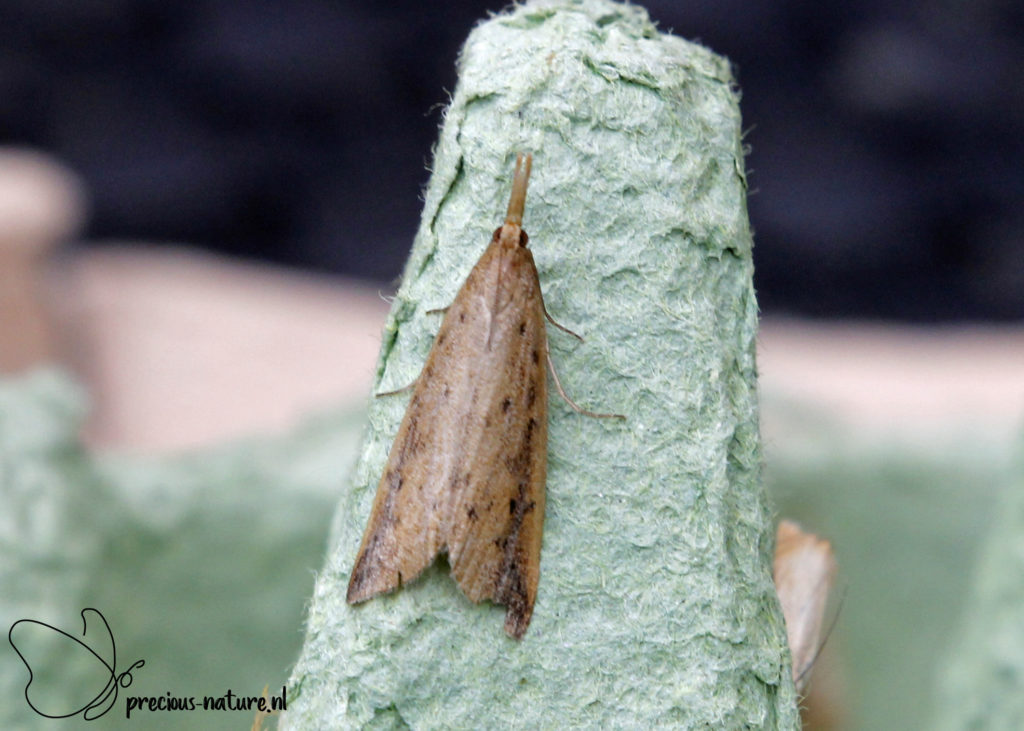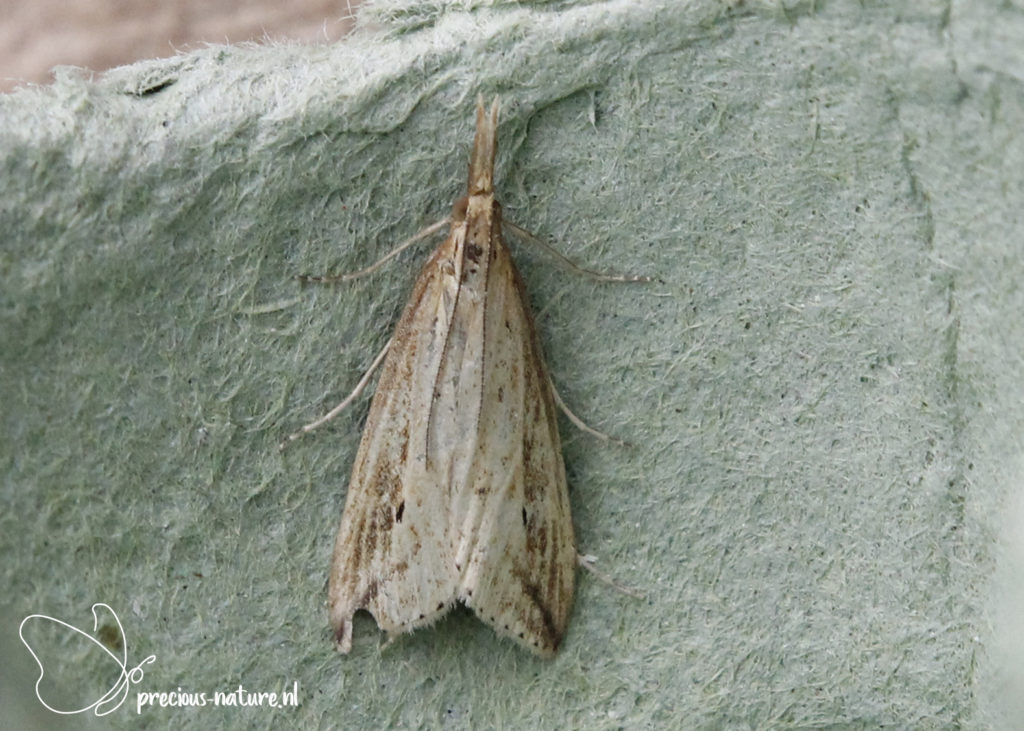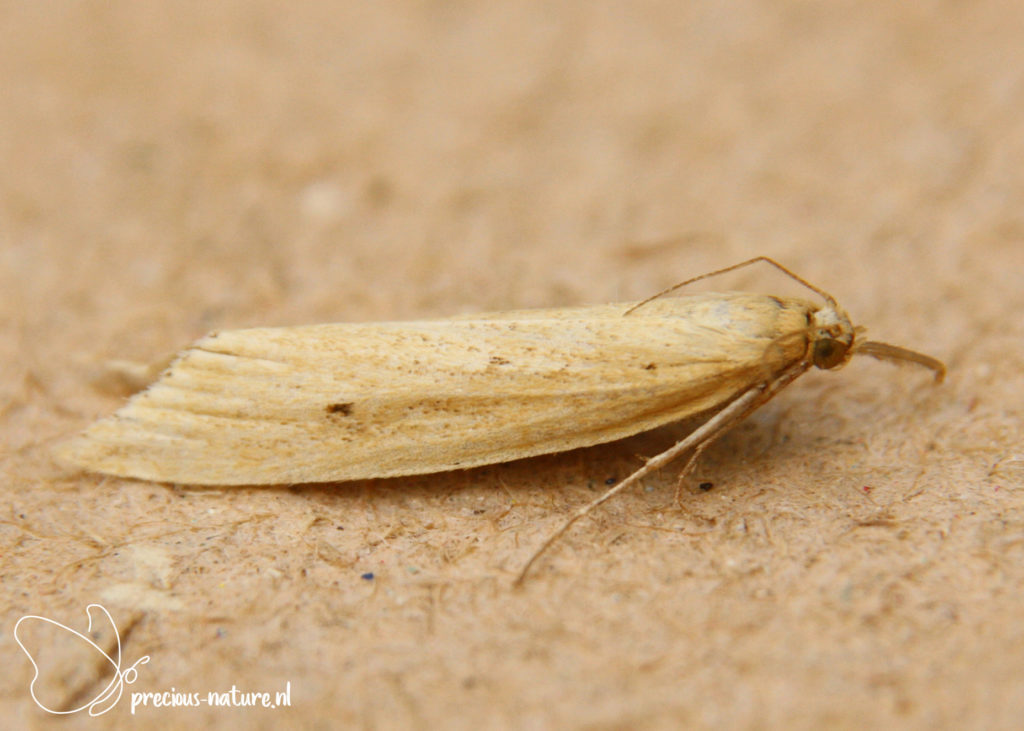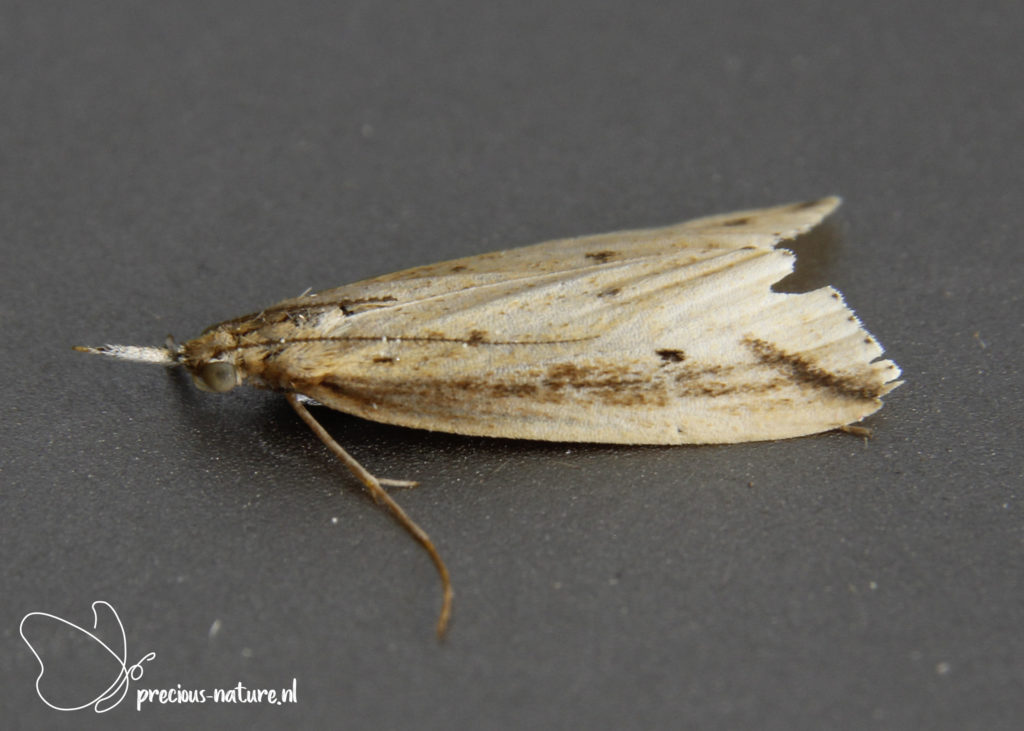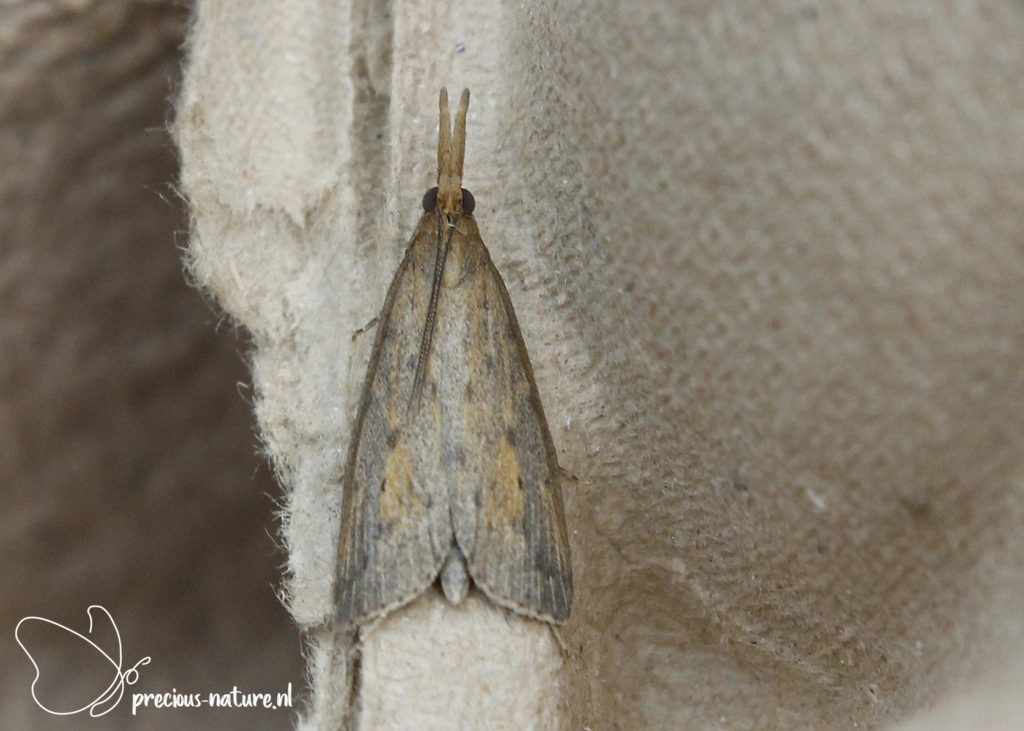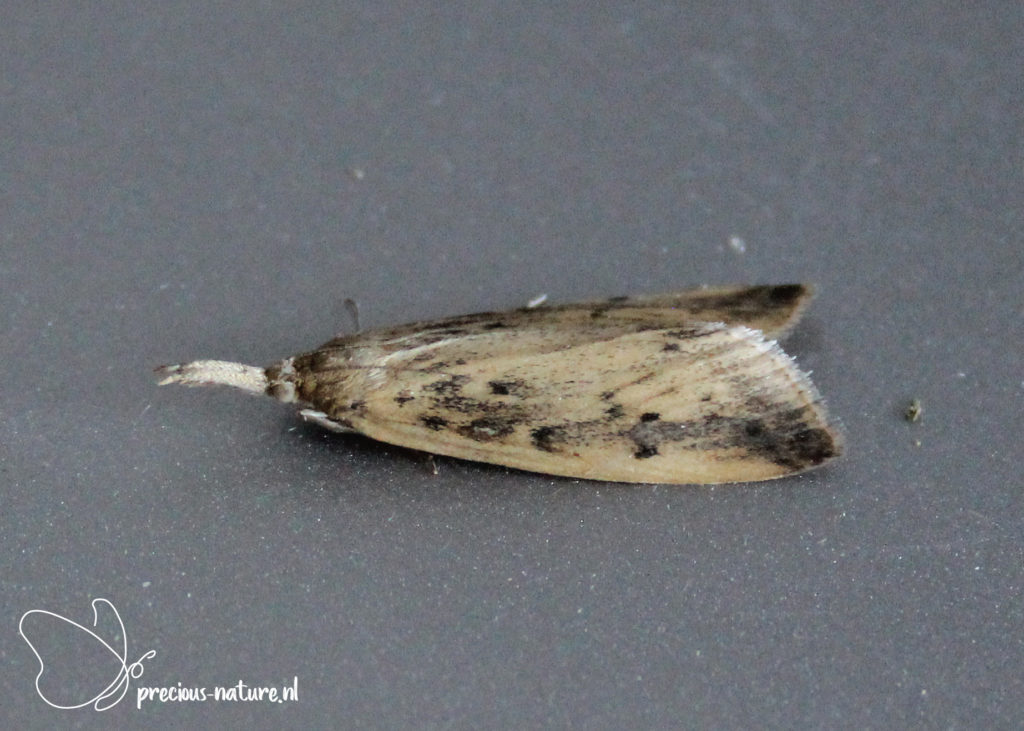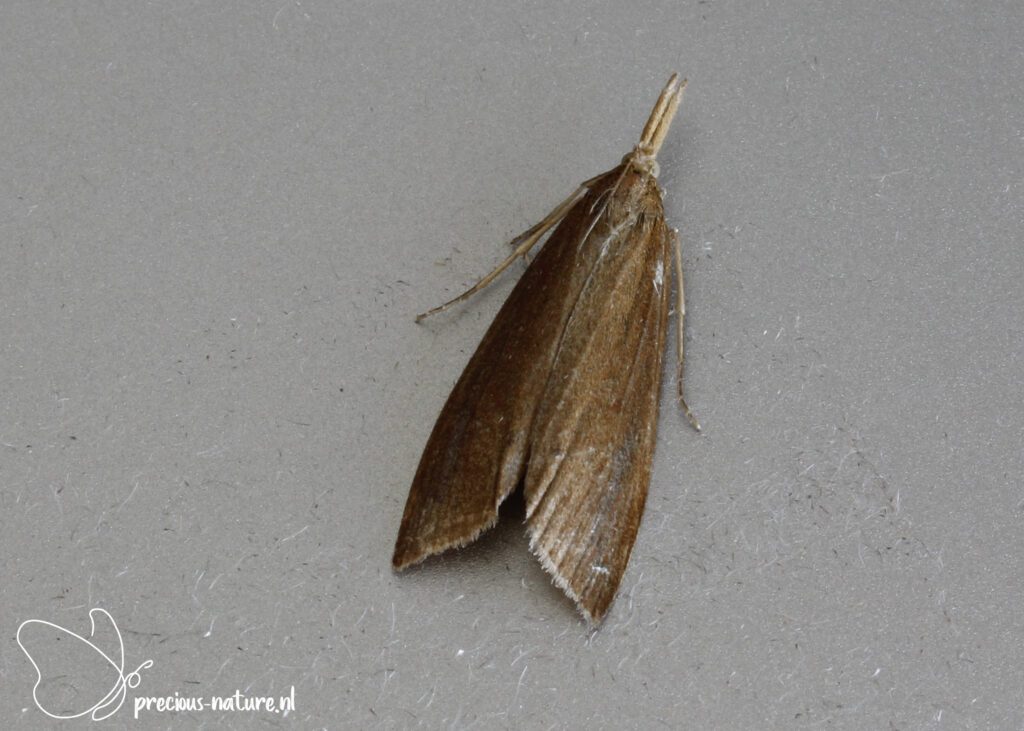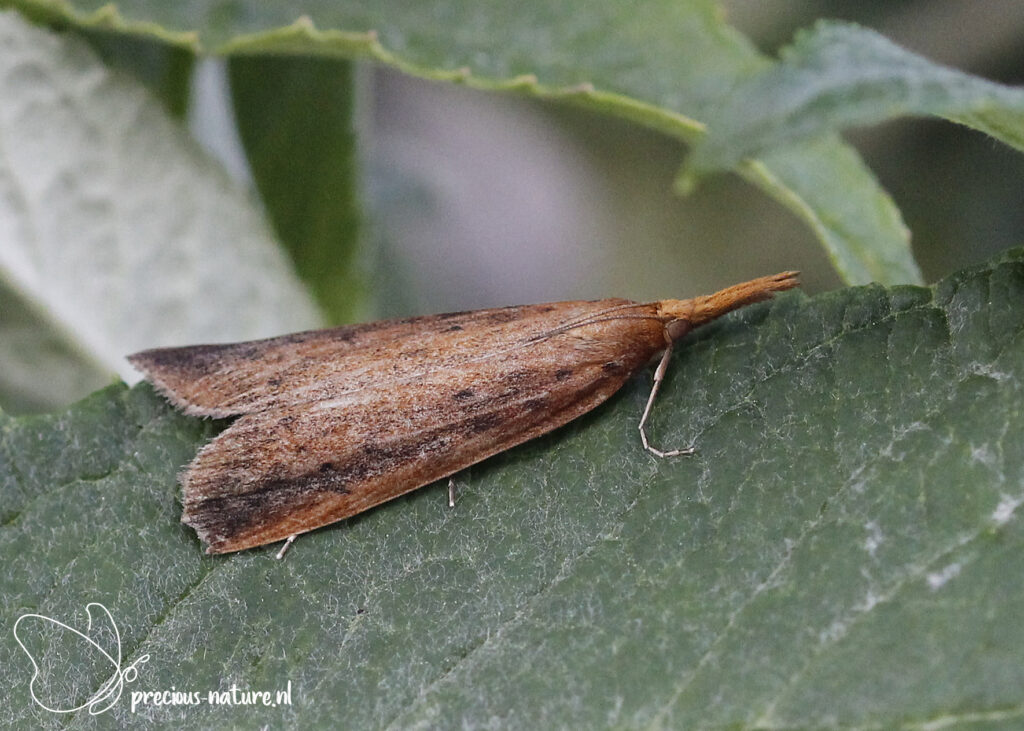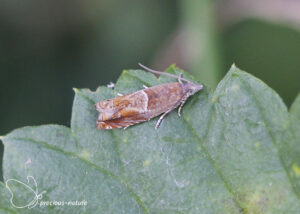Schoenobiinae is a subfamily of the Grass Moths (Crambidae) and is a relatively small group with about 200 species registered worldwide. They are mainly found in a wetland environment.
Genus: Donacaula
Pale Water-veneer – 2018 (NL)
(NCBI-index: 1.858012)
The first specimen I saw of the Pale Water-veneer (Donacaula forficella), I thought was the Giant Water-veneer (Schoenobius gigantella). When studied closely, the black dots along the costa appeared to offer a solution. The female is larger than the male. The male has a straw-yellow forewing with a black dot at about 2/3 of the wing. Furthermore, the black longitudinal stripe stands out with a striking black stripe towards the apex. The female is a lighter tan, but the markings are identical to those of the male. The intensity of the markings can vary. The flying period is from May to July in one generation, sometimes until August or September. The wingspan is 24-32 mm, and the larvae cut a part of a leaf that can serve as a raft to reach a new host plant. Host plant: Common Reed, Reed Sweet-grass. Dutch name: Liesgrassnuitmot. Frisian name: –
Flying period:

Genus: Schoenobius
Giant Water-veneer – 2018 (NL)
(NCBI-index: 1.870291)
A grass moth where the difference between the male and female is huge can be seen in the Giant Water-veneer (Schoenobius gigantella). Not only is the female larger, but also her colour and markings are different. The female’s forewing is brown and relatively narrow. There is a black dot halfway down the wing, and a clear dark smear can be seen running the length of the wing. The male has a somewhat broader forewing and is considerably smaller than the female. The forewings are also light brown, sometimes a bit reddish, and have black spots. The flying period is from May to July in one generation, and the wingspan is 25-46 mm. The larvae feed on the young shoots of the host plant. Host plant: Common Reed, Reed Sweet-grass. Dutch name: Rietsnuitmot. Frisian name: –
Flying period:


